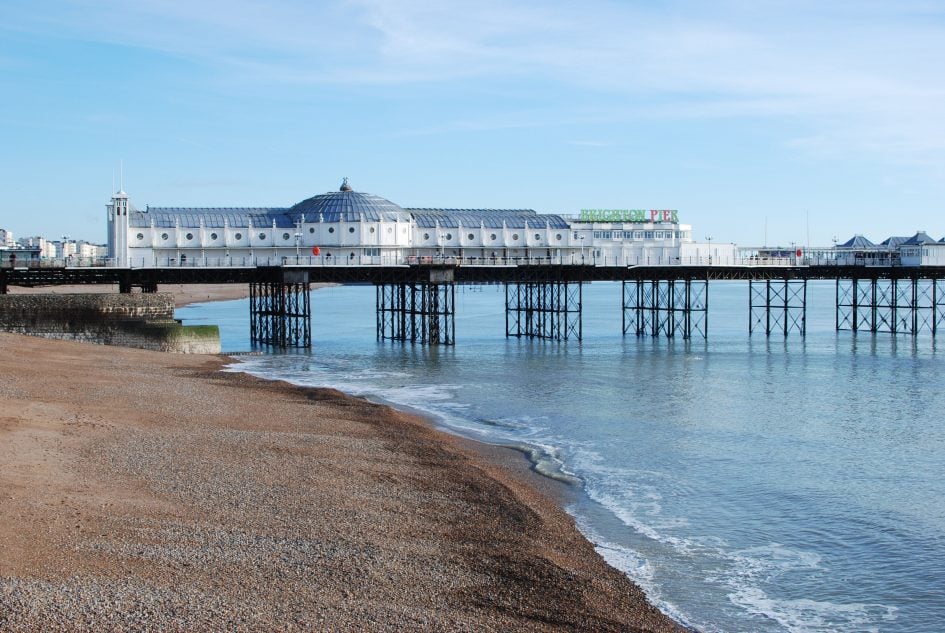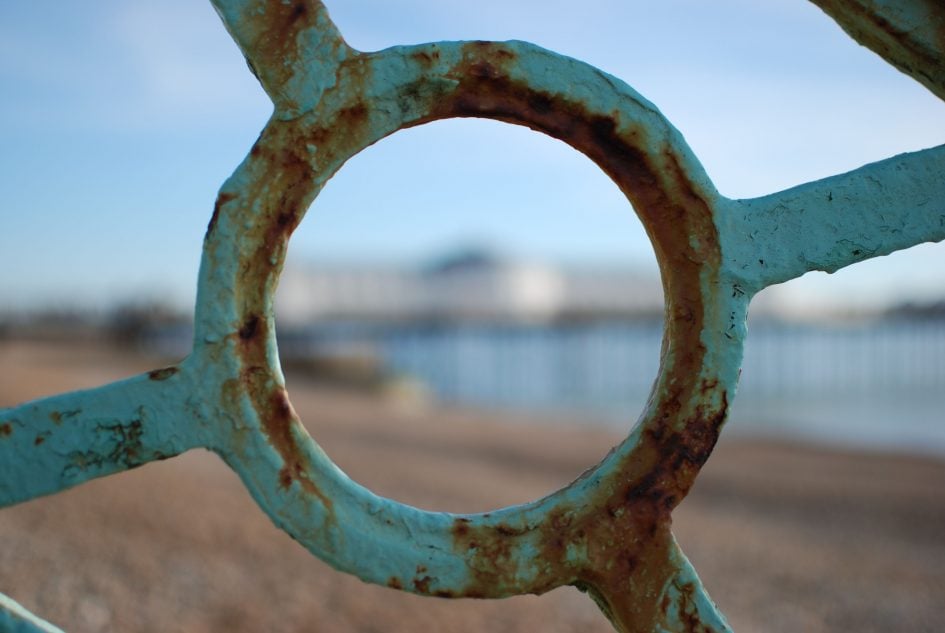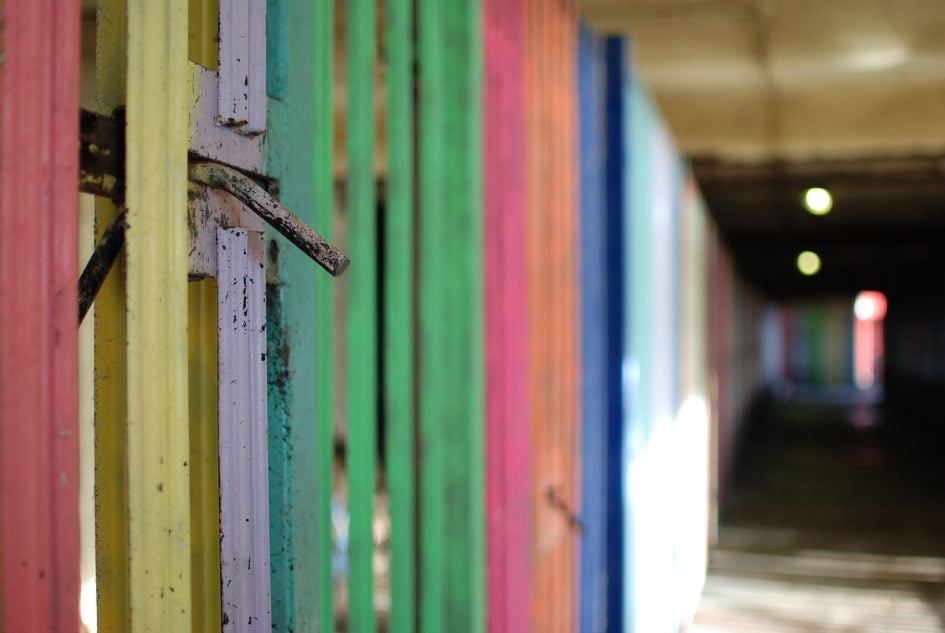Nikon D80 RETRO review
-
-
Written by Gordon Laing
For this retro review, I’m going to show you the best camera I’ve found for under $99 or pounds. Yep, at a time when it feels like most new cameras start at several grand, I wanted to prove you can bag an excellent model for double figures.
I’ve picked the Nikon D80, a classic DSLR from 2006 which may now be 17 years old, but still delivers great-looking photos thanks to its 10 Megapixel CCD sensor, not to mention sporting excellent controls and ergonomics. It’s perfect for students, beginners, or anyone who appreciates vintage digital cameras.
We didn’t realise it at the time, but the D80 would become the last model in this series to employ a CCD sensor, a technology valued by so many enthusiasts today. Sure, you can’t record video on the D80 nor use its screen for live view – that came later on the D90 – but you are getting a mature sensor technology at the top of its game versus one of the earliest CMOS models that still had issues to iron-out. Find out why it could be the bargain for you in the video below, or if you prefer to read the written highlights, keep scrolling!
I’ve been tracking the prices on used D80s for some time, but have become wary of buying untested DSLRs blind from auction sites like eBay. While most of the vintage digital compacts I’ve bought for my retro Dino Bytes channel have sprung back into life given a new battery, I’ve now bought several old DSLRs which arrived with fungus or damaged viewfinder optics.

So to relive my 2006 DSLR fantasy, I turned to MPB, where all their used cameras are not only tested with an honest evaluation and shutter count, but also come with a six month warranty. And in the case of the D80, there was no premium to pay for this peace of mind, with several used models in stock in working order from just £50 to £80 depending on condition; I’m quoting pounds as I’m based in the UK, but MPB also operates in the US and Europe.
I decided to treat myself to one at the upper end, described as being in like-new condition and costing £80 with a shutter count of just over 2500 images, confirmed in the META tags later. Bargain! It also came with an original battery and charger, both in working condition with the camera menus reporting the battery as being close to new. That’s in some contrast to most cameras I buy from auction sites where the battery is completely dead or missing, forcing me to buy a new one for around £20 to simply discover if the camera will even power-up.
I also ordered a pair of used lenses to go with it: a DX 18-55mm f3.5-5.6 VR kit zoom and a DX 35mm f1.8 prime, costing £73 and £84 respectively. They all arrived well-packed and in excellent condition as described, and after charging the battery I was good to go.

To get up to speed on the D80, I rewatched my original review of it back from 2006. While I’d been reviewing cameras in print since the 90’s, this was one of my first videos on YouTube and filmed in glorious square-shaped standard definition with terrible audio. If you’re feeling brave, you can check it out below!
So back in 2006, the D80 may have delivered similar quality to rivals like the Canon 400D / Rebel XTi but represented a step-up in build, handling and features. Plus while Canon adopted CMOS technology for its consumer DSLRs from day-one, Nikon had stuck with CCD, at least until this point.

And even today the D80 remains a classy and very usable camera with twin control dials, an upper information screen, and a generously-sized viewfinder with LCD gridlines that can be switched on and off in the menus. I rely on grids and guides for aligning shots and loved this feature on Nikon’s better DSLRs, especially in the absence of composing with the screen on the D80.
Beyond these features, I also felt the D80 was the best in its peer group for ergonomics. Like Canon, Nikon cemented its design style early on, and the D80 looks and feels as fresh and familiar today as it did 17 years earlier. It’s a camera you can pick up and get to grips with almost immediately, and everything is exactly where it should be.

I’m also more than happy to trade video and live view for a CCD sensor today, not just for the image quality but because it makes the D80 refreshingly simple. Even today’s latest hybrid cameras struggle to present controls and menus that work well for both photo and video. In contrast, the D80 only takes photos, and was the last model in the series to do that.
The menus are split into five sections for playback, shooting, custom settings, setup and retouch. From shooting, you can choose three levels of JPEG compression, with or without a RAW file, or RAW by itself, and they’re still supported by the latest versions of Adobe. Best quality 10 Megapixel images measure 3872×2592 pixels, letting you make 13x8in prints at 300dpi, crop for social posts, and begging the question whether you really need higher resolutions.

Inside the Custom menu you’ll find the option to enable the viewfinder grid guides, as well as an option to set Auto ISO. Separating Auto ISO from the main sensitivity menu is about the only thing that feels a bit odd today, but I generally leave it enabled for my day-to-day shooting, so I was happy to set it and move on.
Vintage digital cameras often catch you out in terms of odd batteries, obsolete memory cards and proprietary ports, but the D80 was forward-thinking enough to remain practical years later. My order from MPB came with a working battery in good condition, but replacements for the EN-EL3e are still available, as are Mini USB cables to directly transfer images to your computer. Sadly the D80 lacks USB charging, but that’s normal for DSLRs of this age.

As for memory, the D80 employed standard SD cards and supported SDHC, which meant a maximum size of 32GB. I confirmed this in practice, with the D80 rejecting my 64GB and larger cards, but working just fine with 32GB and smaller cards. My 32GB card allowed me to capture over 1600 best quality images in RAW+JPEG!
So with the battery charged, an SD card inserted, and the DX 35 1.8 mounted, I hit the streets of Brighton to see how it performed today. All the sample images you see on this page are JPEGs straight out of camera using the default settings. See all of my Nikon D80 sample images at Flickr.

As I mentioned earlier, the D80 is a very well-designed camera which feels comfortable in your hands and easy to control with its twin dials. It’s also useful to view exposure details on the upper screen or through the viewfinder. In the absence of live view, composition is with the optical viewfinder alone, but it delivers a large and bright view with the benefit of on-demand LCD grid lines, allowing accurate framing and alignment. Unlike some old DSLRs, I never felt it was lacking.
Likewise for the 11-point AF system which delivers a step-up in coverage and accuracy over basic 9-point rivals. The speed varies on the lens in question, and while the DX 35 1.8 isn’t the fastest in the system, it felt quick enough for day-to-day use. Plus if you prefer to shoot action, quicker lenses are available, and if vintage is your thing, the D80 will also drive older Nikkor lenses.

Speaking of action, the D80’s top burst speed of 3fps is nothing to write home about today, but remember it comes from an era when even the semi-pro D200 only offered 5fps. Similarly the top extended sensitivity of 3200 ISO is modest by today’s standards, but on the plus-side the images at 800 and 1600 ISO are still fairly clean.
And while we’re talking about Nikon’s semi-pro series, that’s where you’ll need to go if you want weather proofing. Back then, only Pentax and Olympus were including weather-sealing on more consumer-focused models, so if you want a tougher Nikon from a similar period, look for a D200 or D300; these will also sport better metering and faster bursts.

As for the photo quality, I was prepared for the D80’s exposure and white balance to show its age, but was pleasantly surprised to find virtually no issues or situations where I needed to overrule its auto suggestions. Back in 2006, Nikon’s Matrix metering was already better than rivals, and it shows today with the camera easily evaluating most conditions. Likewise for white balance, with every image here taken in Auto and showing no issues unlike some models of the same era.
And while today’s entry-level cameras boast 24 Megapixels, I never felt my 10 Megapixel images from the D80 were lacking in detail. In fact in terms of colour and style, I’m very fond of its output, some of which is undoubtedly down to the characteristics of its CCD sensor. These are images I’d be very happy to use today. The D80 even has in-camera retouching and even a slideshow capability with music, with a demo in my original 2006 video review above.

See all of my Nikon D80 sample images at Flickr.
Nikon D80 verdict 17 years later
It’s testament to how much Nikon got right with the D80 back in 2006 that it remains a compelling proposition almost two decades later. Sure, the absence of video, live view, HDMI and Wifi, along with a modest top sensitivity and leisurely bursts all reveal its age, but crucially none of this matters if you just want a quality photographic experience at a bargain price without the distraction and complexity of a modern camera.
The D80 gives you a decent APSC sensor, interchangeable lenses, good controls and a quality viewfinder for less than $100 or pounds on the used market. This is the model I’d recommend to students, beginners or those on a tight budget who want to learn about photography or try something different from their phone.

It’s also an attractive option for lovers of older tech, the last in its line to sport a CCD sensor, a technology highly valued by enthusiasts today for its tonal and colour repoduction. In fact many DSLRs of the same period with CCD sensors now command higher prices on the used market, so I’d consider grabbing a D80 while they’re still in double figures.
So for the price of a new instax mini camera, you can bag one of the best DSLRs of its day which still delivers excellent image quality with great handling. Yes, it’s still more expensive than a used Canon 400D or Rebel XTi, but with the difference now being only a few quid, why not treat yourself to the superior model?
I bought mine from MPB where again you’ll find an honest appraisal of the condition, avoiding any nasty surprises. When you want to buy or sell used camera gear, check them out!
Buy, sell or trade used camera gear at MPB. Lost, deleted or corrupted photos? I recover mine with Stellar Photo Recovery. PS - if you enjoy my reviews, videos and guides, you can support me my treating yourself to a copy of my In Camera book, an official Cameralabs T-shirt or mug, or by treating me to a coffee! Thanks!
 It’s testament to how much Nikon got right with the D80 back in 2006 that it remains a compelling proposition almost two decades later. Sure, the absence of video, live view, HDMI and Wifi, along with a modest top sensitivity and leisurely bursts all reveal its age, but crucially none of this matters if you just want a quality photographic experience at a bargain price without the distraction and complexity of a modern camera. The D80 gives you a decent APSC sensor, interchangeable lenses, good controls and a quality viewfinder for less than $100 or pounds on the used market. This is the model I’d recommend to students, beginners or those on a tight budget who want to learn about photography or try something different from their phone. It’s also an attractive option for lovers of older tech, the last in its line to sport a CCD sensor, a technology highly valued by enthusiasts today for its tonal and colour repoduction.
It’s testament to how much Nikon got right with the D80 back in 2006 that it remains a compelling proposition almost two decades later. Sure, the absence of video, live view, HDMI and Wifi, along with a modest top sensitivity and leisurely bursts all reveal its age, but crucially none of this matters if you just want a quality photographic experience at a bargain price without the distraction and complexity of a modern camera. The D80 gives you a decent APSC sensor, interchangeable lenses, good controls and a quality viewfinder for less than $100 or pounds on the used market. This is the model I’d recommend to students, beginners or those on a tight budget who want to learn about photography or try something different from their phone. It’s also an attractive option for lovers of older tech, the last in its line to sport a CCD sensor, a technology highly valued by enthusiasts today for its tonal and colour repoduction.



